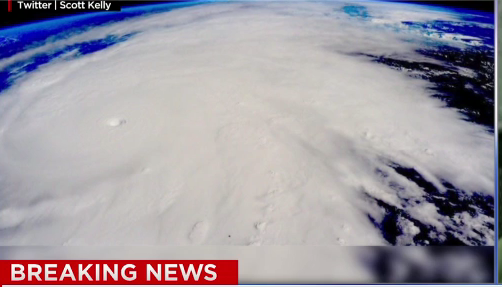Patricia, ‘the most dangerous storm in history,’ makes landfall in Mexico

(CNN): Hurricane Patricia — the strongest hurricane ever recorded — made landfall on Mexico’s Pacific coast about 6:15 Friday evening (7:15 ET), its 165 mph winds barreling into the coast of southwestern Mexico near Cuixmala, the U.S. National Weather Service said.
The monster storm touched down hours after weakening slightly with sustained winds decreasing to 190 mph and gusts to 235 mph. Even then, Patricia lashed the coast with fierce winds and rain as tourists and residents in resorts such as Puerto Vallarta and Manzanillo sought shelter.
Taking the brunt of the hurricane are small fishing villages about 130 miles south of Puerto Vallarta, which had braced for potentially catastrophic 200 mph sustained winds and torrential rains. Damage from the Category 5 storm is expected to be devastating.
Mexico’s National Commission for Water, CONAGUA, said the eye of Patricia has a diameter of 10 kilometers, or 6.21 miles.
President Enrique Peña Nieto, in a tweet, said: “Hurricane Patricia is on the coast of Mexico. Do not go outside. Protect yourselves and follow instructions from Civil Protection. I am thinking of you all.”
The excessive wind speeds, according to the head of the Mexican agency that includes its national weather service, “makes Patricia the most dangerous storm in history.”
By that, CONAGUA director Robert Ramirez de la Parra meant any cyclone ever measured, not just in and around Mexico.
“The hurricane is so big and so intense that it has the capacity to pass over both the Sierra Madres in our country — that is, through our most mountainous ranges — and then exit the country on the other side into the north part of the Gulf of Mexico and possibly the United States,” Ramirez de la Parra said.
While its strength could fluctuate, “Patricia is expected to remain an extremely dangerous Category 5 hurricane through landfall,” the U.S. National Hurricane Center said Friday afternoon.
Already, Patricia is “the strongest hurricane on record in the National Hurricane Center’s area of responsibility (AOR) which includes the Atlantic and the eastern North Pacific basins,” according to a Friday morning forecast discussion.
The closest contender, at this point, might be Hurricane Camille, which battered the U.S. Gulf Coast in 1969. Patricia looks to be more powerful than that storm, as well as stronger than Hurricane Andrew in 1992, Katrina in 2005 and many others.
It already has surpassed them in one way: its central pressure reading — the weight of the air above a system — which is a key measure of any storm’s strength.
The midday Friday central pressure recording of 879 millibars (the barometric pressure equivalent is 25.96 inches) “is the lowest for any tropical cyclone globally for over 30 years,” according to the Met Office, Britain’s weather service.
Patricia’s intensity is comparable to Typhoon Haiyan, which hit the Philippines in 2013, the World Meteorological Organization tweeted. More than 6,000 people died in Haiyan, due largely to enormous storm surges that rushed through coastal areas. Haiyan had 195 mph sustained windswhen it made landfall, while Typhoon Tip was at 190 mph (and had a slightly lower pressure reading of 870 millibars) in 1979.
CNN